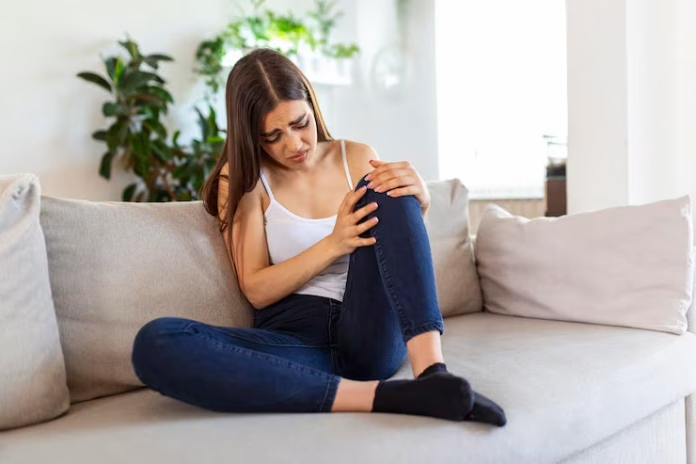These are the most commonly asked top questions regarding knee pain and the exercise you need to do for it.
What is the single best exercise for knee pain?
No single exercise works for each with knee pain; however, Quad Sets are often the most universally recommended for this because they build foundational strength with zero joint movement, making them safe for almost anyone.
Is walking good for knee pain?
Yes, in most cases.
Walking is one of the best low-impact activities. Always start walking on flat and even surfaces for short durations. If you have pain while walking, then you have to focus better on the non-weight-bearing exercises (like leg raising and heel slides). These knee pain exercises help to build strength.
How can I relieve knee pain quickly at home?
For immediate relief, you don’t do the exercise here; you find the sign of inflammation and flares. So, follow the following principle
- for acute knee pain. There might be failure for this; you have to follow the R.I.C.E. principle (Rest, Ice, Compression, Elevation)
- For chronic pain, do only gentle movement and stretching. This often provides faster and more lasting relief than complete rest.
What exercises are best for knee pain from arthritis?
Water-based exercises (aquatherapy) have been proven to be a great exercise for arthritis. The buoyancy supports your weight while the water provides gentle resistance. The heel slides, quad sets, and straight leg raises are also excellent choices for this.
Top Exercises for Knee Pain Relief
Here we are presenting the knee pain relief exercise and briefing on how to do it correctly, and how it helps in the process of reducingneepaini,n,, and the knee tips and tricks for each exercise.
Exercise | How to Do It Correctly | Why It Helps Knee Pain | Key Form Tips & Cues |
|---|---|---|---|
| 1. Quad Sets | Sit with one leg straight. Place a small rolled towel under the knee. Tighten the muscle on top of your thigh, pressing the knee down into the towel. Hold for 5 seconds. | Re-engages the main knee stabilizer (quadriceps) with zero joint movement. Safe for arthritis and acute pain. | Lie on your back, one knee bent (foot flat). Keep the other leg straight. Tighten the quads of the straight leg and lift it to the height of your bent knee. Lower slowly. |
| 2. Straight Leg Raises | Lie on your side, hips and knees bent at a 45-degree angle, legs stacked. Keeping your feet together, lift your top knee as high as possible without rocking. Lower it. | Builds quad strength without bearing weight, crucial for pain-free walking and stair climbing. | Keep your lower back pressed to the floor. The movement should be slow and controlled. |
| 3. Glute Bridges | Lie on your back, knees bent, feet flat. Squeeze your glutes and lift your hips to form a straight line from shoulders to knees. Hold for 3 seconds, then lower. | Strengthens glutes to prevent the knee from collapsing inward—a common cause of pain. | Don’t over-arch your back. The lift should come from your glutes, not your back. |
| 4. Heel Slides | Lie on your back with legs straight. Slowly slide one heel toward your glutes, bending the knee as far as comfortable. Slide it back to the start. | Gently restores range of motion and reduces stiffness without compressing the joint. | Focus on smooth movement. Do not force the knee to bend further than it wants to. |
| 5. Clamshells | Stand holding a chair for balance. Slowly rise onto the balls of your feet. Pause at the top, then lower your heels back down with control. | Targets the gluteus medius to ensure proper hip-knee alignment during movement. | Keep your hips stacked perfectly. The movement is small and controlled. |
| 6. Calf Raises | Stand holding a chair for balance. SSSlowlyise ontonto thells of your feet. Pause at the top, then lower your heels back down with control. |
